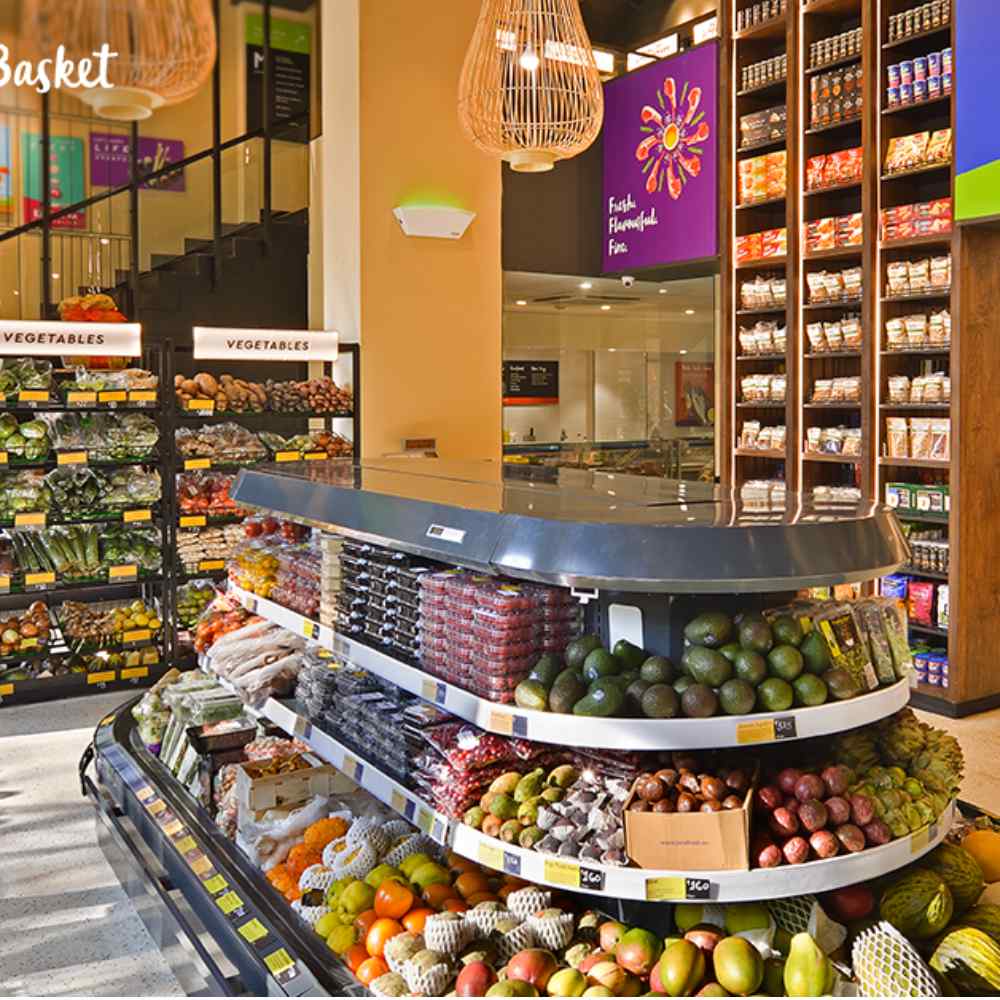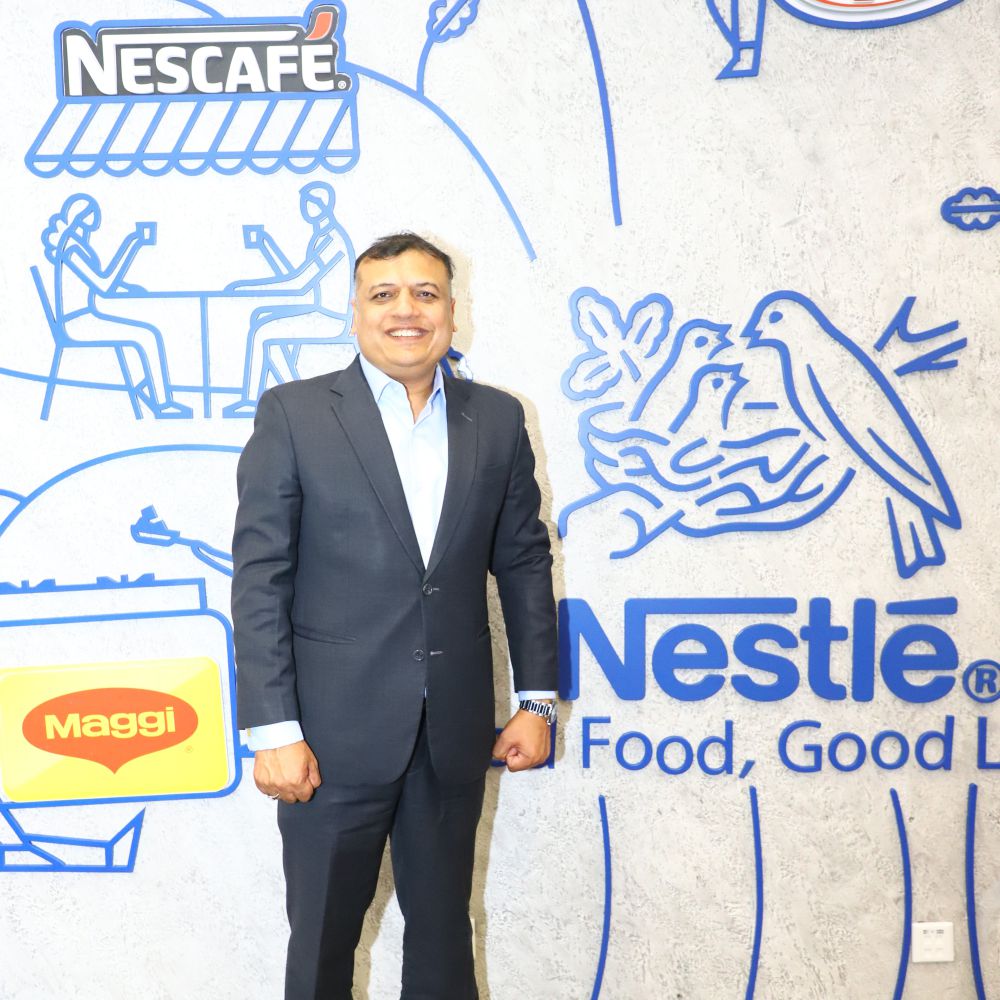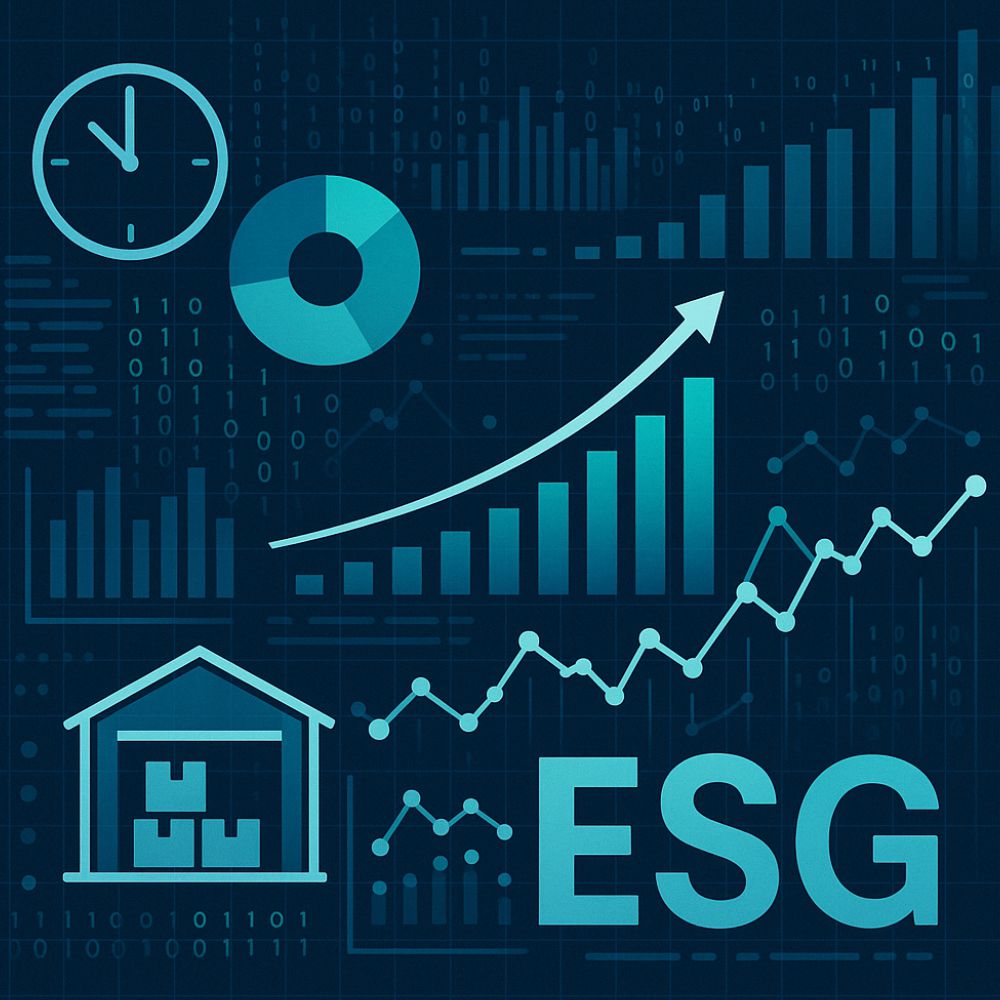Two years ago, Godrej Nature’s Basket (GNB) set on a transformation journey – REFRESH 2020. Aptly playing its part, the newly established supply chain function at GNB not only brought considerable efficiency with deep impact on in-stock level, on-time delivery, inventory planning, returns management but also enhanced customers’ delight at each point. Arshad Saiyed, AVP and Head – Supply Chain, Godrej Nature’s Basket, shares their supply chain journey…
Project replenishment
Satisfied and delighted customers are key to any business success. Supply chain plays a key role in assisting store teams to fulfill customer needs and delight them. Rightly functioning supply chain with strong customer centricity brings competitive differentiation to fresh and ambient food retail business.
Nature’s Basket has become well-known for offering international product ranges, but there were opportunities for improvement on customer experience from the standpoint of consistency in availability. This at times led to customer dissonance and some frustration among store teams. When we deep dived, we observed this happened due to manual processes which were inconsistent, time consuming from indenting and replenishment and had weaker controls. It as well led to higher wastages, adversely impacting operational efficiency and profitability.
Over the last 20 months, our supply chain team led the defining & implementation of various process frameworks, replenishment models for fresh and ambient categories in partnership with category and operations colleagues and developing sustainable supplier relationships. This achieved shared business success on three clear focus areas:
- Strong customer centricity by achieving consistently high availability
- Service organization mindset to support stores, ensuring support from vendors
- Enhance efficiency in supply chain through better optimizations and process standardizations.
Significant improvement was attained in stock availability of fresh and ambient categories which positively impacted customer NPS score on availability to 65 from 25. HF (High frequency) customers as well improved to 55% from earlier 44%.
The goal of Godrej Natures’ Basket supply chain team is to ensure products are available at the convenience of the shopper in the most efficient manner. This want is accentuated due to large number of SKUs, seasonal / market variations, constant changing customer needs, ever evolving supplier base and long lead times. The processes are designed and driven with paramount focus on the need of internal and external customer.
This journey to success was not easy
Well, the major pain point of the stores was inconsistent availability of products, leading to customer dissonance. Supply chain function addressed it by creating a roadmap with time-bound milestones in alignment with other business functions factoring business priorities.
The team started approaching the delivery on this metric in a phased manner - one category after another. It all started with fresh categories and progressed into ambient categories over a period of 4-5 months. The results were inspiring and strong reflection of aligned efforts:
- Built replenishment model for fresh categories to help stores order accurately and ensure consistent abundance of produce on shelves.
- Fresh category fill rates improved to 90% from earlier levels of 65- 70% and YoY sales growth in these categories were in the range of 30%+ (Bakery–39%, F&V-46%, Meats–17%)
- Achieved substantial improvement in stock availability for ambient products. Stock availability (> 3days) has reached 88 % from earlier 55%.
- DC to store fill rates (Service rate) improved to 88 % from earlier 65- 70% levels
- Worked with tech/IT team to drive process through system and add scalability.
Built strong partnership with the category, operations and IT team to institutionalize processes, which addressed current gaps and set the foundation for future scale. Master data management processes to improve master data quality with defined SOP on article-vendor listing and necessary guidelines.
Assortment Rationalization: Basis customer and internal feedback to have consistent availability of merchandise basis the available shelf spaces and GMROF, store level finite SKU count was defined. Ambient assortment being optimized from 9000 SKUs to current 3500 SKUs. This led to better stock management and consistent availability. Simultaneously, assortment lock concept (Item budget) has been introduced at category level to have effective control over inventory and consistent shelf space optimization.
Cross-functional New Store Opening: Plans for the same were prepared with function wise ownership, timelines, mapping overlaps and inter-dependencies. It helped in pre-visibility of activities across function and timely stock connectivity at the store. Successfully opened all new stores. We have opened in all 15 new sites over last year.
The task force: The newly formed team at Nature’s Basket formulated and worked towards the supply chain strategy supported by required organogram with a 3-year road map with milestones to proactively contribute towards transformation journey of refresh 2020 Vision. There have been two focus aspects:
Sustainability: The supply chain team brought critical systemic changes in SAP in close collaboration with the IT team to make the replenishment processes sustainable viz., article-vendor master updation in SAP, setting up automated PO expiry control basis supplier lead times to push vendors for on-time delivery, scanning based goods receiving in DC to check EAN mismatches at source, DC-store replenishment in SAP to have system visibility of stock replenishment and picking efficiency at DC. The team is working to build further system controls and integrate the process into SAP to manage future scale with profitability.
Scalability: The team worked to envision a future-ready supply chain by bringing about structural changes in the supply chain to efficiently manage the scale of increasing the footprint of stores through key centralization project, delivered through smart warehousing. This entailed moving more merchandise through the warehouse, achieving the benefit of consolidation, economies of scale at the back-end, and providing better operational efficiency to store operations with optimized inventory and additional margin or the business leading to COGS improvement.
The transformation journey
The transformation journey was challenging as it entailed a shift of value proposition change from a being a destination to a neighborhood store and from premium food to daily delight store. To translate that strategy across the entire organization and getting it executed required a lot of change management. We have been able to percolate that change right from top to down as well built right capabilities in terms of people & processes in the organization. Supply chain function was actually originated from that strategy. It was originated as one of the strategic pillars in this transformative journey. Our transformation journey to redefine India’s freshest and finest food experience rests on four key pillars:
- Excel in Sourcing & serving the freshest and the finest.
- Stores come first, always & every time
- Relentless in achieving profitable growth
- Creating a lasting experience for all customers, employees, suppliers and communities
We began our journey at Nature’s Basket in January 2017 with myself being a single individual to an entire function starting from defining strategy, road map with milestones, organizational structure, integration of existing talent, hiring specialized talent, developing supplier relationships and setting up processes. We were clear that we wanted to build a company, which was extremely strong with processes. This is a very execution focused business, and to have high class execution, a company needs to be built on processes and drive those processes through the right set of people and technology.
We did overall assortment rationalization because in an average 5k-6k SFT neighborhood store, you will not be able to keep more than 5000 SKUs factoring supplier fill rates but our assortment used to be in the range of 12,000. There were two drawbacks to manage such a huge SKU. First of all, we were not able to deliver a consistent experience to our customers because one day we would have one product and another day a new product came on the shelf. In such cases, consistent SKU availability goes for a toss and the second is your inventory holding. Earlier our damage & expiry used to be in the range of 6-8%, which has now come down to 2.5%. This is even when our fresh contribution to overall business is more than 50%.
Huge credit goes to our category and sourcing colleagues in improving the sourcing for Nature’s Basket. Our sourcing teams did great work in identifying the right origin, right partners and consolidators who perfectly understand our requirements and quality parameters. We are trying to go deeper into the back-end and upstream to avoid undue consolidators in between. For F&V, around 35%-40% of sourcing happens from farmers based in Manchar and Nashik farms. We have tied up with farmers so that the benefits percolate right to the bottom of the pyramid. Two months back, the company hosted farmers’ conference at a place where they grow. It helps us empower them, educate them of our requirements and in turn our customers get what they want and farmers get much more deserving prices for their goods.
Network clustering within each region: Once the cluster is finalized with a set of stores, the SKU count per cluster is finalized – only that much count is allowed into the store because it has to offer effective revenue to the company against the space utilized. When we keep these counts constant and follow one-in one-out it helps us maintain perfect balance between key sellers, new product introductions and continually improving customer experience. That was a big process change that we had to bring in along with maintaining consistent availability. We also brought in a lot of change in terms of SAP and Master Data Management system because the idea is to not just list the product but to ensure that once you’ve listed that product, it is consistently available in the market. We have to be very accurate in demand-supply planning to ensure that ordering accuracy is better. We are also working on continually improving engagement with our suppliers so that our fill rates are better.
We have started tracking the top suppliers and are continuously discussing with them to enhance ontime deliveries. With the rationalized assortment, right ordering, and better supplier engagement, our fill rates have enhanced significantly. Earlier our fill rates used to be 45—48%, now it has gone up to 75%+. By ordering efficiently, the availability of the stock on the shelf has improved hugely. When we started, we had 54—58% availability of stocks, today we have been able to take that figure to 88%. At any store, the stock has to be in a minimum quantity, which is sufficient for three days of sale. That’s a significant business shift.
Adoption of centralization strategy and augmenting it by a SMART warehouse: We are in growth phase, adding 2-3 stores every month. Nature’s basket is already a network of approx. 40 stores with further inorganic addition of 15 stores in the Goa market through a JV. Currently we are focused on organic growth in 3 geographies – Mumbai, Pune and Bangalore.
Momentum as we scale up: Once, as a management team, we aligned on clustered centralization as strategy to grow, we were clearly committed to invest in our backend capabilities of warehousing and distribution to not only manage current volumes better but more importantly to offer a back-end which pro-actively support the future scale in an efficient manner. For my suppliers to reach out to each store and for us to manage ordering of each store, requires a lot of efforts. I believe it’s not a scalable model. We are trying to build increased centralization or indirect flow share up to 70% levels. This will be highly beneficial to stores and enable them in efficient front end operations. Stock levels at stores will reduce due to reduced lead times, no MOQ condition and aggregation of inventory at higher node. Store staff and their time used in goods receiving will reduce significantly because now stores don’t have to manage 40-45 deliveries from suppliers a day. With higher centralization share stores will have under 10 deliveries a day including a consolidated delivery.
A Smart warehouse in Bhiwandi
We achieved an inflexion point in our transformation journey with the setting up of a Smart Warehouse which not only de-bottlenecked our backend but also significantly enhanced our warehousing and fulfillment capabilities. It’s equipped with state-of-the-art infrastructure- flexible and scalable as well deep integration of technological capabilities in each step of warehouse operations, including an integrated and customized WMS capability with differentiation offered on two aspects (a.) automated batch management based on FIFO (first in first out) and (b.) Paperless operations. We had set an ambition to build a scalable supply chain by establishing a smart warehouse- it entailed moving to a new premise – complaint and scalable for space, layout, quality and infra standpoint as well involved on-boarding of a professional 3PL with the right logistics and tech capabilities and having focus on productivity and a service mindset.
Around Dec 2017, we had set an ambition to achieve the milestone and transition journey from blueprint to results was achieved in record time of 7 months.
We created an exhaustive project plan covering all possible aspects across functions and stakeholders with tentative timelines and kept a hawk eye focus across key milestones and their delivery. This was a great case of end-to-end planning, with deep focus, anticipation and execution abilities and accommodating any deviations well in time to avoid any impact on final timeline. The entire journey had three key milestones:
a. RFQ, evaluation, CSQ and LOI and site finalization
b. Defining IT landscape (WMS customization, WMS- SAP interface detailing followed by WMS-SAP integration) – this was key as the entire benefit on technological investment were to come from the quality of data handshake and data movement being close to real time.
c. Greenfield set-up (site getting ready, Capex procurement & installation and finally statutory compliances.
All of this required huge efforts and consistent attention from the team directly working on the project, cross functional collaboration and coordination with external parties. The overall experience was a demanding but quite a rewarding experience when we were able to see the benefit it started delivering in terms of consistent service levels to stores - 96.5%, On-time GRN – 94.2% GRN completed same day and returns reduced to 0.9% from earlier 4.1%. The real time visibility and prompt action helped us improve the quality and productivity of entire operations with damage & expiry at WH coming under 0.6 % from 4% easier.
Demand & supply management
For demand management, we consider quite a few historical parameters and certain immediate future factors. We do demand planning basis past 90 days data of sale. We also factor previous year sales during the forecasted period and then we do weightage analysis and create a baseline with exponential smoothing. Once we have a baseline ready, we work based on our annual operating plan and check on variances and do consensus planning with stakeholders and finally arrive at demand plan. We intend to start an automated way of sharing a 13-week rolling plan with our key suppliers so that they are also aware in terms of what they need to keep. That’s the way complete demand planning works.
In terms of supply planning, since we have two modes – direct store delivery (DSD) and indirect flow share (DC). We have different replenishment logic for both. For DSD, we can’t keep inventory holding more than 7-15 days depending on SKU characteristics as stores don’t have much space. But at DC, we keep an inventory of 25-30 days depending on the SKU if it’s a flow through or put-away. We are investing heavily into implementing new age technology solutions such as SAP driven auto replenishment. Going ahead, the entire supply-demand planning will be managed by SAP. We expect this to be the next game changer for this year.
Omni opportunity
Omni-channel adds a variety to a company’s offline or physical retail stores. At physical stores, we just need to ensure that the products are available on the shelf but the moment you go online, you are actually offering an assortment, which is much wider than what you can keep on the shelf as the store space is always going to be limited and the product portfolio will keep on growing from time to time. The challenge is to manage assortment along with the customer service level that you have promised. Currently around 15% of Nature’s Basket business gets generated from its online channel, which is a good contribution. We have identified certain specific catchments or specific stores to ensure home delivery of online orders. Going forward, we have a plan in place to develop certain dark stores and if the volumes increase further, we might open a consolidation center as well. We have around 5 delivery slots throughout the day to service our customers. The key lies in executing better fulfillment, last mile delivery seamlessly in terms of route planning, real-time visibility and customer experience.
Reducing reverse logistics instance
We have invested in online processes and in back-end technology to ensure that the product reaches the customer in optimum condition of quality and temperature. When we started, we took a few months to set up the right processes. You need to appreciate the fact that we are not retailing a smartphone with consistent features rather we are serving the demand which is perishable in nature and same SKU has different sizes and complexities are high. Parameters such as right product sourcing, post-harvest handling, storage and handling, managing supplier relationship, sorting and grading before dispatch to stores, maintaining quality norms at each step of supply chain and finally how the order is getting picked and dispatched from the store till it reaches the customer, if you are able to maintain quality guidelines across then you are able to deliver that quality to customers. It calls for a lot of investment in terms of processes, and as you scale up, you have to ensure that processes start to get integrated with technology but very critical is getting the right set of people. In a nutshell, if processes, technology and right people are balanced well, then automatically you are able to deliver a consistent experience to your customers and that’s what precisely we have done in the Nature’s Basket journey.
Reverse logistics remains a big part of online business and specially in the fresh supply chain because the moment you have multiple handlings, perishability of the product goes significantly higher and if the product is being handed beyond three or four times, the product usage gets limited. So, we try to ensure minimum touches. We have returns of roughly 6% in online and home delivery and we are aiming to bring it down to 2.5 – 3%. The challenges are definitely there because the higher the number of returns, the higher is probability of damage and expiry.
3PLs – a critical link
The moment you have any considerable warehousing and distribution operations for a retail business then the right 3PL plays a critical and differentiating role. Smart warehouse that Nature’s Basket has set up in Mumbai is run by a professional and tech oriented 3PL. The most important parameters on which it evaluates 3PLs include:
- 3PLs must possess a growth as well as service mindset and serve the company that has invested in their logistics capabilities by keeping the service levels top-notch.
- They need to have strong processes in place with technology at their core.
- The team must take customer feedback very seriously and continually strive to innovate further.
- They need to be thoroughly professional in their approach.
We have two warehouses – Mumbai & Bangalore. Both are operated by different 3PLs. Mumbai is a bigger operation with different requirements vis-à-vis Bangalore. 3PL engagements are long-term starting with 3-year contracts. We are quite optimistic from the way entire 3PL industry is shaping up given the shift in the nature of fulfillment and distribution driven by customer expectations & order characteristics and wave of new technology innovation like collaborative robotics, augmented reality, autonomous vehicles, sensor technology and IoT.
‘GNB Refresh 2020’
Godrej Nature’s Basket has embarked on a journey of strategic transformation titled ‘GNB Refresh 2020’. The business strategy outlines a clear roadmap for the business to become India’s freshest and finest premium neighborhood store and achieve its target of 3x growth by FY20. GNB’s transformation journey entails consolidation and sustainable profitable growth that will materialize over the next 3 to 5 years. The aim is to have a robust and thoughtful omnichannel expansion in the medium term.
We aim to provide a brighter customer experience with an assortment of finest local and international foods and highest level of service; and to continue to set benchmarks in gourmet food retailing.

Categories

Magazine Editions























